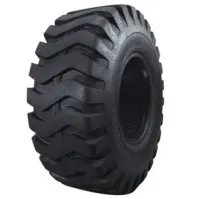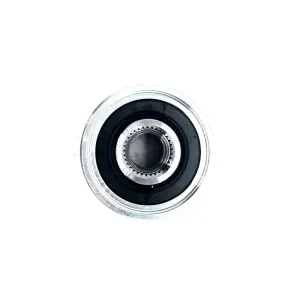Tires are ring-shaped elastic rubber products that roll on the ground and are assembled on various vehicles or machinery . Usually installed on a metal rim, it can support the body, buffer external impacts, achieve contact with the road and ensure the driving performance of the vehicle. Tires are often used under complex and harsh conditions. They are subject to various deformations, loads, forces, and high and low temperature effects when driving. Therefore, they must have high load-bearing performance, traction performance, and cushioning performance. At the same time, high wear resistance and flex resistance, as well as low rolling resistance and heat generation are also required.

Tire development history #
The birth and development of automobiles is a great achievement of the world’s scientific and technological progress and an important footprint of human progress. It has brought mankind from the era of horse-drawn carriages to an era of automobile industry. In the early days of automobiles, in order to satisfy the comfort, control stability, and power of automobiles, scientists continued to conduct research and innovation, and continued to promote the progress and innovation of the tire industry.
In 1839, Goodyear developed ” rubber vulcanization technology” and successfully developed rubber that would not decompose at any temperature below the boiling point. Thirty-eight years after Goodyear’s death, Frank Koebelin named the tire company he established Goodyear in memory of Charles Goodyear , who made great contributions to the American rubber industry.
In 1888, John Dunlop made rubber into a tube shape, wrapped it around the edge of a wooden wheel, and then filled it with gas. The elasticity of this tire can not only fully absorb vibrations, but also protect the mechanical properties of the car body well. The first pneumatic tire was born, and the technology was first applied to bicycles .
In 1891, Andrew Michelin developed removable pneumatic tires for bicycles . On June 11, 1895, the Michelin brothers applied pneumatic tire technology to the automotive field.
In 1903, Mr. JF Parma invented twill textiles. This product has good wear resistance and can greatly extend the service life of tires when applied to the tire field. This invention led to the advent of bias tires .
In 1930, Michelin added a rubber sealing layer about 2 to 3 mm thick to the inner wall of the tire and successfully developed the first tubeless tire , also known as a vacuum tire.
In 1946, Michelin invented the radial tire . This design method increased the service life of the tire by 30 to 50%, while reducing the fuel consumption of the car by about 8%. The use of radial tires has ushered in a true technological revolution in the tire industry.
Since the advent of radial tires, people have made great progress in the tire pattern style, structural design, design and development of skeleton materials, and rubber formula design and development, making the performance of the tires increasingly perfect.
The role of tires #
First, the tire is the carrier of force transmission between the vehicle and the road surface. It transmits driving force, braking force, steering force, etc. through the tire, thereby realizing the driving, braking, steering and other operations of the car.
Second, support the vehicle load. The load on the vehicle causes the tire to sink until the average pressure in the tire’s contact patch equals the inflation pressure inside the tire.
Third, reduce and absorb the vibration and impact force of the car during driving, so as to avoid early damage to car parts caused by severe vibration. At the same time, it adapts to the high-speed driving state of the vehicle and reduces driving noise, ensuring driving safety, comfort, handling stability and fuel economy.
tire performance #
Tires are the only parts of the car that are in contact with the ground. The performance of tires directly affects the safety of vehicle drivers and passengers. The importance of tire performance can be imagined. For this reason, various countries have also made regulations on tire safety performance. clear requirements. With the rapid development of the automobile industry, consumers are not only paying attention to the safety performance of tires, but also starting to pay attention to the comfort, handling stability, NVH and other performance of the vehicle.
The first category, safety performance mandated by regulations: high speed, durability, decoupling, strength, outer edge size;
The second category, the performance of tire assembly to vehicle testing: comfort, handling stability, NVH, fuel economy , impact resistance, dry and wet braking performance, wear performance, etc.;
The third category is single tire performance testing conducted to study the performance of a single tire or the performance of a tire assembled on a complete vehicle: static ground pressure distribution, rolling resistance, tire stiffness, single tire noise, tire mode, PRAT, Six-component force test, odor resistance, air tightness, environmental protection, tire dynamic balance uniformity, etc.
Industrial development characteristics #
As a traditional manufacturing and processing industry, the tire industry is an important industrial sector in the development of the national economy. The development of the tire industry requires a large amount of resource and energy investment. Industry technological progress has a strong driving force for industrial growth, and industrial development is closely linked to the downstream automobile industry. Specifically, the development characteristics of the tire industry are mainly reflected in the following four aspects:
(1) High resource dependence #
The tire industry uses rubber as the main raw material, and uses carbon black, skeleton materials and rubber additives as auxiliary processing and production. The cost of raw materials accounts for a high proportion of the total cost of tire production, resulting in the overall development of the tire industry affecting rubber, oil and gas. are highly dependent on other resources. In the total cost of tire production, raw material costs account for more than two-thirds, as high as 69%, while other costs account for only 31%. In the breakdown of raw material costs, the cost of rubber raw materials accounts for 50% of the total cost of tire production, of which the cost of natural rubber accounts for about 37%, the cost of synthetic rubber accounts for about 13%, and the cost of raw materials such as cord fabric, carbon black and steel wire accounts for about the total cost of tires. 19%.
Natural rubber is produced from the latex of natural rubber trees. Since natural rubber trees have extremely high requirements on the natural environment, the countries that can be planted are mainly distributed within 10 degrees north and south latitude, and the planting area is very limited. As a result, natural rubber resources are relatively scarce, and the global natural rubber resources are relatively scarce. Rubber production capacity is seriously insufficient to meet the growing demand for natural rubber. Therefore, the high dependence on the world’s scarce natural rubber resources has caused the development of the tire industry to be directly affected by fluctuations in natural rubber production capacity and prices. In addition, since synthetic rubber , carbon black and other raw materials are mainly produced from petroleum, and steel wire is obtained from iron ore, the development of the tire industry also has a high degree of dependence on resources such as petroleum and iron ore. Petroleum and iron ore Small adjustments in the prices of other resources can cause large fluctuations in the production costs and product prices of the tire industry.
(2) Large energy consumption #
The tire industry is an industry with huge energy consumption. From the initial raw material processing to product production to final product use, a large amount of high-carbon fossil energy is consumed. First of all, most of the main raw materials of the tire industry come from petrochemical energy, including various petroleum cracking products such as synthetic rubber , carbon black, nylon fiber , etc. About 70% of the raw materials for synthetic rubber come from petroleum. In addition, in terms of petrochemical energy and The refining process of natural rubber also consumes a large amount of coal, electricity and other energy. At present, the tire industry’s consumption of synthetic rubber accounts for more than half of the world’s total synthetic rubber production, and the tire industry has become one of the main consuming industries in the upstream petrochemical industry. Secondly, the production and processing of tire products, such as mixing, vulcanization and other process links, are inseparable from energy sources such as coal, electricity and water to provide power. At the same time, due to the large size and mass of tire products, increased The transportation costs of the tire industry cause tire products to consume a huge amount of fuel during transportation. Finally, tire products consume serious energy during use. Tire products are mainly used in automobiles. Although the engine is the main component of automobile fuel consumption, the proportion of tire products in automobile fuel consumption cannot be ignored. According to experimental measurements, when a car is traveling at a speed of 100 km/h, the amount of fuel consumed to overcome the tire rolling resistance accounts for 20% of the car’s total fuel consumption; in a truck, this proportion can reach 30% or even more High, that is to say, tires account for more than one-fifth of a car’s fuel consumption.
(3) Strong technological driving force #
The processing and production of tire products is realized through the operation of related machinery and equipment. Therefore, industry technological progress has a very obvious driving force for the development of the tire industry and the improvement of product quality. On the one hand, with the improvement of global information technology, electromechanical technology, automation technology and other scientific and technological levels, the proportion of companies applying fully automated production lines and production technology in the tire industry has increased significantly, which has greatly promoted the overall production efficiency of the tire industry. At the same time, It has accelerated the pace of promoting cleaner production, energy conservation and consumption reduction in the industry. On the other hand, technological progress has a significant impact on improving the quality of tire products. Taking radial tires as an example, for every 20%-30% reduction in the rolling resistance of radial tires, the vehicle’s fuel saving can reach 2%-4%, the mileage can be increased by 35%, and CO2 emissions per 100 kilometers can be reduced by about 400g.
(4) Close connection with the automobile industry #
As the main downstream industry sector of the tire industry, the automobile industry is closely related to the development of the tire industry. For example, among the rubber raw materials consumed by the automobile industry, the consumption of rubber used in tire manufacturing accounts for about 60%, and the consumption of other rubber products accounts for about 40%. Tires carry the entire weight of the car. They must not only ensure the car’s ride comfort and driving stability, but also improve the car’s traction, braking and passability. They play an extremely important role in the car. From the perspective of volume growth, as the scale of the global automobile industry gradually expands, the scale of the tire industry has grown rapidly. From 2005 to 2012, global tire sales increased from 12.27 billion to 15.56 billion, with an annual growth rate of nearly 4%. From the perspective of quality improvement, as people’s requirements for automobile safety, comfort, fuel economy, low noise, wet slip resistance and other performance requirements continue to increase, it has pointed out a specific direction for the development of the tire industry and guided the tire industry in Accelerate the pace of technology research and development and promotion in terms of new materials, new processes, energy conservation, intelligence, and greenness.

 April 1, 2024
April 1, 2024 










